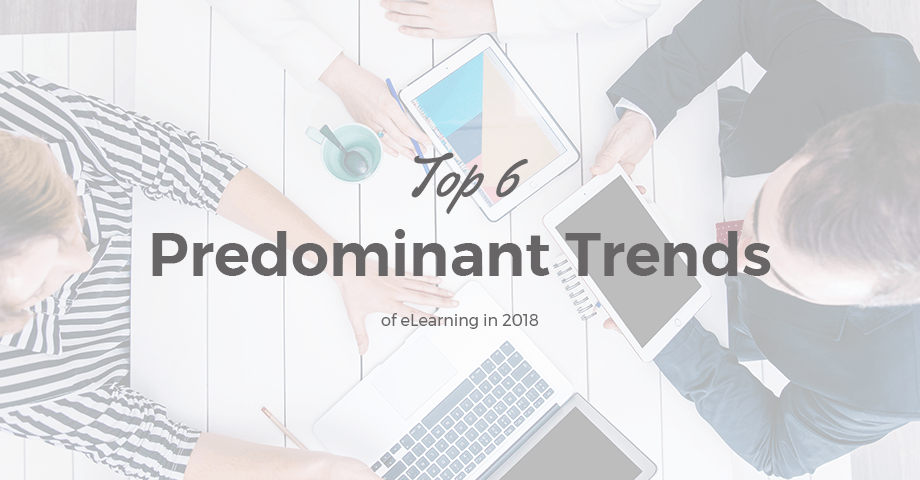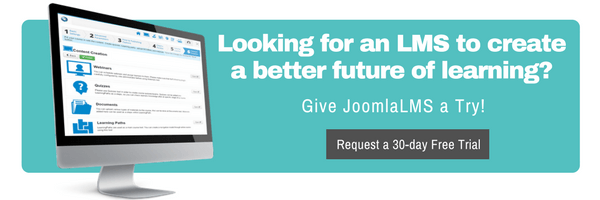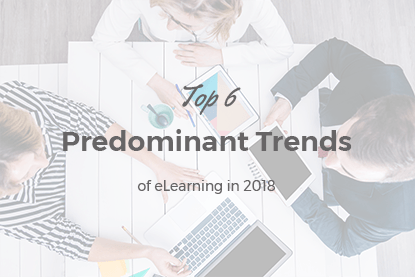Everything in our life is governed by change. As the years pass by and we grow older, we realize that our mind, emotions, and body are consistently changing. There’s no such thing as fixed. Why Should Teachers Adopt eLearning Practices in their Classroom?
According to the correspondence principle, which emphasizes the truth that which is “as above, is also below”, as our internal world changes, the external environment goes through the same mechanics of change.
Because of this continuous movement both in our internal and external world, all the aspects of our life change because our life is heavily influenced by the environment in which we live in. Therefore, as time goes by, as we change, every sector of the professional marketplace will go through numerous changes.
The academic environment and the learning ways that people adopt are consistently changing too. In fact, corporate eLearning has grown by approximately 900% in the past decade. As corporate organizations devoted their time, money, and energy to expand their influence, the world has quickly adopted the eLearning option and took it as a great alternative to the expensive, mainstream option.
Nowadays, teenagers must no longer pay thousands of dollars to attend high-reputation colleges and universities. They can simply attend the best quality courses and webinars on the subjects they want to learn (a huge difference from being obliged to). If the study is focused on a specific subject, unlike in the traditional academic system, the student can acquire and understand more information in shorter time. That’s what eLearning is all about – the freedom of study choice.
Every contemporary teacher and principal should feel responsible for adopting the latest eLearning practices into their schedule. Why? Because technology, used in the right way, can skyrocket the quality and performance level of learning. Bring new, exciting opportunities in the class and you’ll capture the trust, respect, and attention of your students.
Let’s take a quick peek at the 6 most impactful eLearning trends of 2018. Even though these may not be completely new or not new at all, they ought to continue predominating the digital eLearning environment for even more years to come.
1. Gamification
Most people confuse the concept of gamification with the concept of gaming. In fact, these two terms have a completely different meaning. Gamification is the practice of wrapping up non-game contexts into game theories and mechanics.
For example, most games present either a “journey”, a “quest”, a possibility to raise your level/rank/performance/status, and so on, and more than often, it’s that progression that makes the game more challenging.For an organized eLearning system, you must think the same way. There must be a journey and a purpose. The entire material should be organized in an inspiring, entertaining, or challenging way, so the users will feel engaged to “play” more. Therefore, they’ll obviously learn and grow more.
The benefits?
· Engages students in incredible ways
· Makes studying a little more challenging and less boring
· Complex eLearning material stimulates both creativity and intellect
· Stimulates growth and momentum
2. Video Learning
It’s predicted that by 2019, 80% of the entire digital web traffic across the entire world will be represented by video content. As you may notice, every social media network prioritizes video content over any other type of media content such as texts, pictures, or graphics.Video learning should be present in courses as it’s a terrific opportunity to improve the overall experience of the student. Visual learning is extremely important and effective if implemented well, as it can help students perceive problems from different angles.
3. Virtual Reality & Augmented Reality
You should already be familiar with the VR and AR trends, as they’re all over the social media channels already. AR (augmented reality) improves the learning experience by allowing students to experiment with various tasks through a simulation. This allows the student to improve their expertise and become more capable and ready to perform real-life tasks e.g. doctors and surgeries, bomb diffusers, etc.)
VR has the same uses and more. The student can fully engage in a completely different environment where they can focus on the educational task at hand.
4. Mobile Learning
Mobile learning is a trend born by the huge smartphone trend that has taken the world by storm for a few good years now. Everyone carries a smartphone that can connect to the internet, and most people can play videos or access courses through their phones. This leaves room for huge opportunities, and there are already a big majority of people (mostly millennials) who use their phones to learn.
5. Personalized Learning
As a teacher who is to adopt eLearning in the class, pay attention to this: if you truly want to be effective, you must sift through the sea of information that’s sitting at your fingertips and carefully prioritize and personalize the material that you’ll teach. Students expect to establish their own style and pace of learning, so you’ll have to personalize the experience to bring them closer to the big purpose. You can learn more about adopting personalized learning by simply researching on Google – it’s really worth a few minutes of reading.
6. Content Curation
“Find the individuals who are best in their fields and curate the best content from each source. Put it all together, create an order or a sequence, and present it to your students. You WILL be surprised at how well your students are going to take it!” – Mark Hartwell, CEO at EssayGeeks.co.uk.
Indeed, content curation is a very productive way of giving students the best out of the best. Even the information isn’t structured by a single organ, the organizing and reorganizing of the entire educational material will provide a lot of value to every student who engages with it.
Takeaways
As the world changes every day, our thoughts, habits, and learning ways are also shifting. If our kids are still learning from books, their kids and their grandkids may never get to experience that. The physical environment as we know it is soon going to change in a fully digitalized environment, where the internet of things predominates most of our material objects (DIGITAL phones, watches, glasses, digital assistants, fridges, bracelets).
Learning? It will be different, for sure. Will it be better? Perhaps. This question can better be answered once we actually see how the institutional educational system adapts to the current technology shifts.
*Chris Richardson has been working as an editor at a publishing agency in London, UK for 5 years. He is also a professional content writing expert in such topics as career growth, self-improvement, blogging, and technology innovations. Feel free to connect with him on Google+










